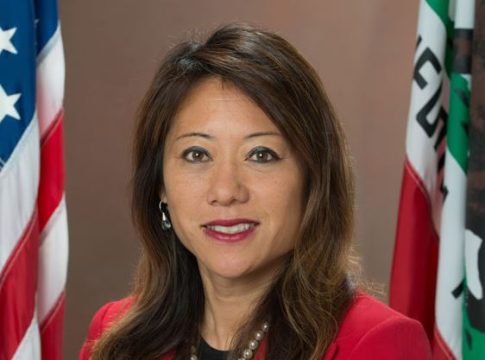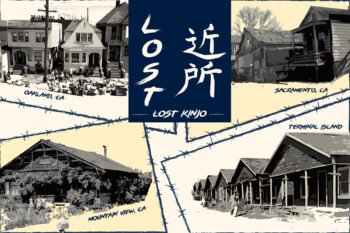
Faster than the coronavirus itself, racist reaction is spreading faster than the viral outbreak. As efforts to address the disease continue, another outbreak is also appearing revealing the darker side of humanity: mistrust, fear, xenophobia and outright racism.
Most people barely notice how easy it is to turn words of caution into a racist attack, meme or well-intentioned, but nevertheless, racist gaff even if it is a micro-aggression.
But, if you’re Asian, paranoia starts to creep in when you’re in a crowded commuter train or in a crowd and you simply have to clear your throat. You try to suppress the urge or you take a sip of water to rid yourself of that itch in your esophagus. You start to notice people staring at you or they move away. Or, is it all in your imagination?
Journalists sometimes may fall into the same racist trap, cautions the Asian American Journalists Association, which suggested some guidelines to help American media in their coverage of the virus.
LATEST STORIES
Stories are starting to mount of the racialized fear of Asian Americans because of the coronavirus, which originated from China and has spread worldwide. Some of the recent incidents include:
- Ride-share drivers are refusing to travel to the countries’s Chinatowns and won’t pick up Asian customers.
- Business is down for Chinese restaurants. In the US, Chinatowns, in general, have seen fewer visitors.
- Bullies severely beat up a teenage student in Southern California because his attackers accused him for having the virus because he was Asian.
- Hotels deny lodging to Asian American customers
- An AirB&B host in Great Britain turns down an Asian student’s bid for housing
- Another Southern California student is sent to the nurse’s office because he began coughing after drinking some water which went down the wrong tube.
And the list of transgressions continues.
“Do not assume that if someone is of Asian descent, they have coronavirus,” Dr. Nancy Messonnier, director of the CDC’s National Center for Immunization and Respiratory Diseases, told the L.A. Times.
Members of the AAPI community are targets right now because public health events have always been racialized. Pandemics that originate in areas populated by mostly people of color get more scrutiny, such as SARS in China or Ebola in West Africa, according to Teaching Tolerance.
However, when pandemics occur in the US and other western countries, such as the H1N1 virus a couple of years ago, citizens in those countries were not viewed as innately diseased. Many people die yearly from the flu, but Westerners aren’t viewed our of fear.
Anti-Chinese sentiment in the US related to disease goes back to when Chinese people began immigrating here. In the campaign to bar Chinese workers from entering the country in the late 1800s, White labor unions argued that people from China carried diseases that were more virulent than those found in White people, discounting entirely that whole civilizations in the America’s were wiped out by small pox which came from Europe.
In the same way disproven studies were used by European colonizers to justify enslaving Africans and junk science about people from Asia was used to justify laws leading to exclusion and exploitation of Asian immigrants. It solidified fear and phobia against Chinese people. The “yellow peril” narrative was born.
These racist tropes are directly tied to the oppression of Asians and Asian Americans in the United States and eventually led to the Chinese Exclusion Act of 1882.
Coupled with racist tropes about health and culture, these laws led to racist violence against Asian Americans. The remnants of that legacy remain with us today and it is being resurrected by the Donald Trump anti-immigration rhetoric.
MEDIA GUIDELINES
In a press release, the Asian American Journalists Association is urging journalists to exercise care in their coverage of the coronavirus outbreak in China to ensure accurate and fair portrayals of Asians and Asian Americans and to avoid fueling xenophobia and racism that have already emerged since the outbreak.
Some of the news and commentary that have raised concern include:
- Use of images of people wearing face masks without providing the proper context: For many years prior to the coronavirus outbreak, face masks have been commonly used in East Asian countries, including for protection from pollution. This practice has crossed over into immigrant Asian American populations in the United States and the masks are now more prevalent as a result of the outbreak. AAJA urges news outlets to consider the various reasons for the face masks and provide context when using such images.
- Use of generic images of Chinatown: Only include images of a local Chinatown if it is directly related to a news story, not as a way to illustrate the virus. The images are appropriate, for example, if the story is about Chinatown businesses emptying out over fears of the virus, or if there are potential cases stemming from a particular Chinatown. AAJA warns against blanket use of Chinatown images that reinforce stereotypes and create a sense of “otherness.”
- Use of the term “Wuhan virus”: The World Health Organization issued guidelines in 2015 discouraging the use of geographic locations when naming illnesses because it could stigmatize the people living there. Coronavirus is the umbrella term for a large group of viruses that can cause anything from the common cold to SARS, according to The Associated Press stylebook. COVID-19 is the disease caused by the virus that originated out of Wuhan.
Meanwhile, AAJA is heartened to see examples of comprehensive, fair and accurate coverage of the outbreak, its impact in East Asian countries and among immigrant communities in the U.S. and around the world.
For example, while many of the passengers in the two chartered airline flights that flew Americans from China immediately after the outbreak were of Chinese descent, most media only referred to the quarantined passengers as “Americans,” which they are.
Also, AAJA points out that news outlets have covered the impact on daily lives of residents in and around Wuhan; the culture and history of Wuhan beyond its relation to coronavirus; efforts to help businesses in local Chinatowns affected by fear over the virus; the proliferation of xenophobic incidents against those of East Asian descent around the world; and more.
AAJA encourages journalists to turn to reliable resources like the WHO and the Centers for Disease Control in their ongoing reporting. And as always, AAJA is available to engage in a dialogue to foster fair and accurate coverage of Asian American and Pacific Islander communities.
The reaction is not just limited to the US. Anti-Chinese racism is on the rise around the world: the Philippines, Japan, Australia, Latin America, Europe and Canada.

Asians in France have countered the French reactions with the hashtag #JeNeSuisPasUnVirus) (#IAmNotAVirus).
“Yes, People are insulted and kicked off public transport because they are Asian. It’s not just jokes/hatred on social networks. Discrimination also happens in real life,” tweeted French journalist Linh-Lan Dao.
AsAmNews has Asian America in its heart. We’re an all-volunteer effort of dedicated staff and interns. Check out our new Instagram account. Go to our Twitter feed and Facebook page for more content. Please consider interning, joining our staff, or submitting a story.









